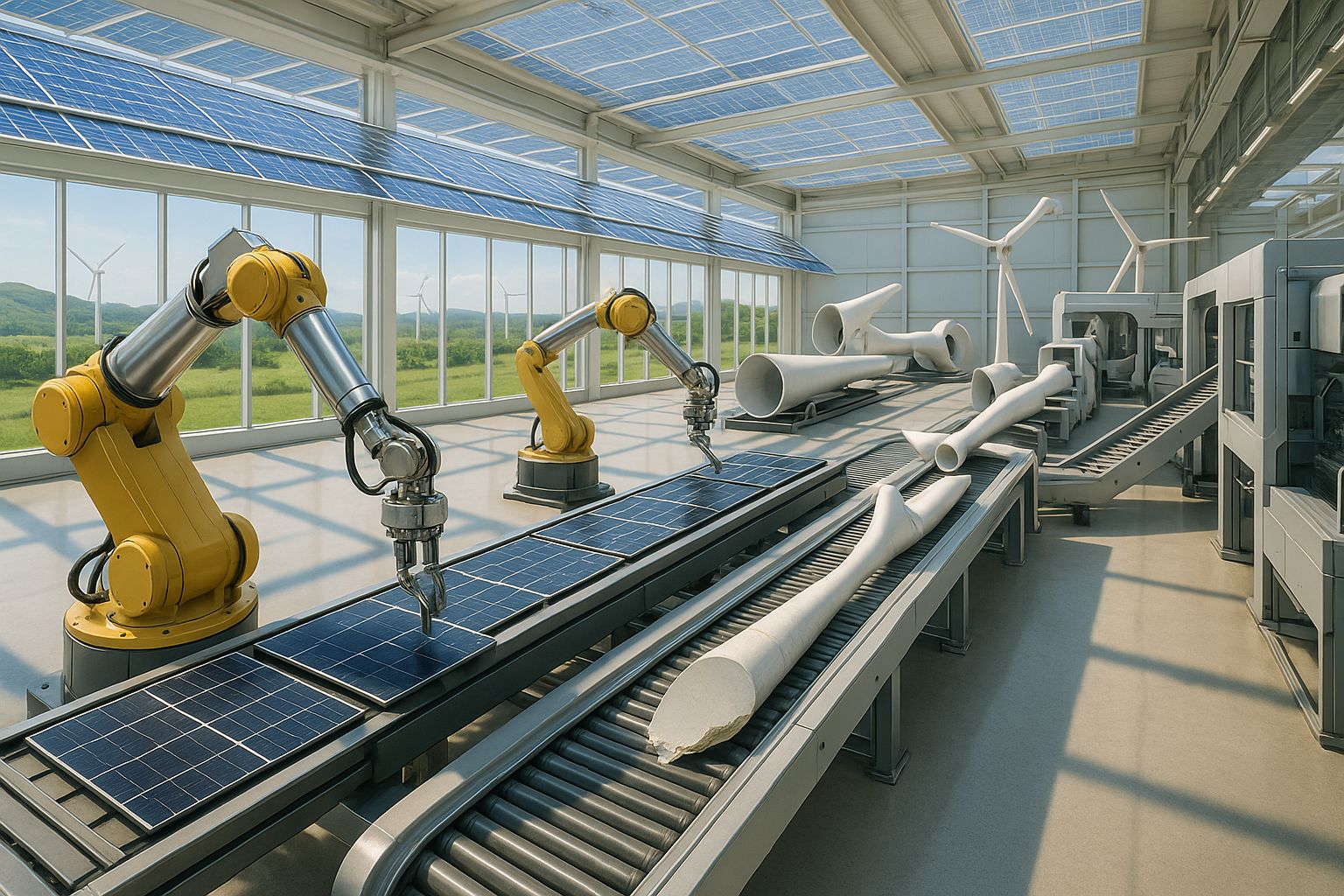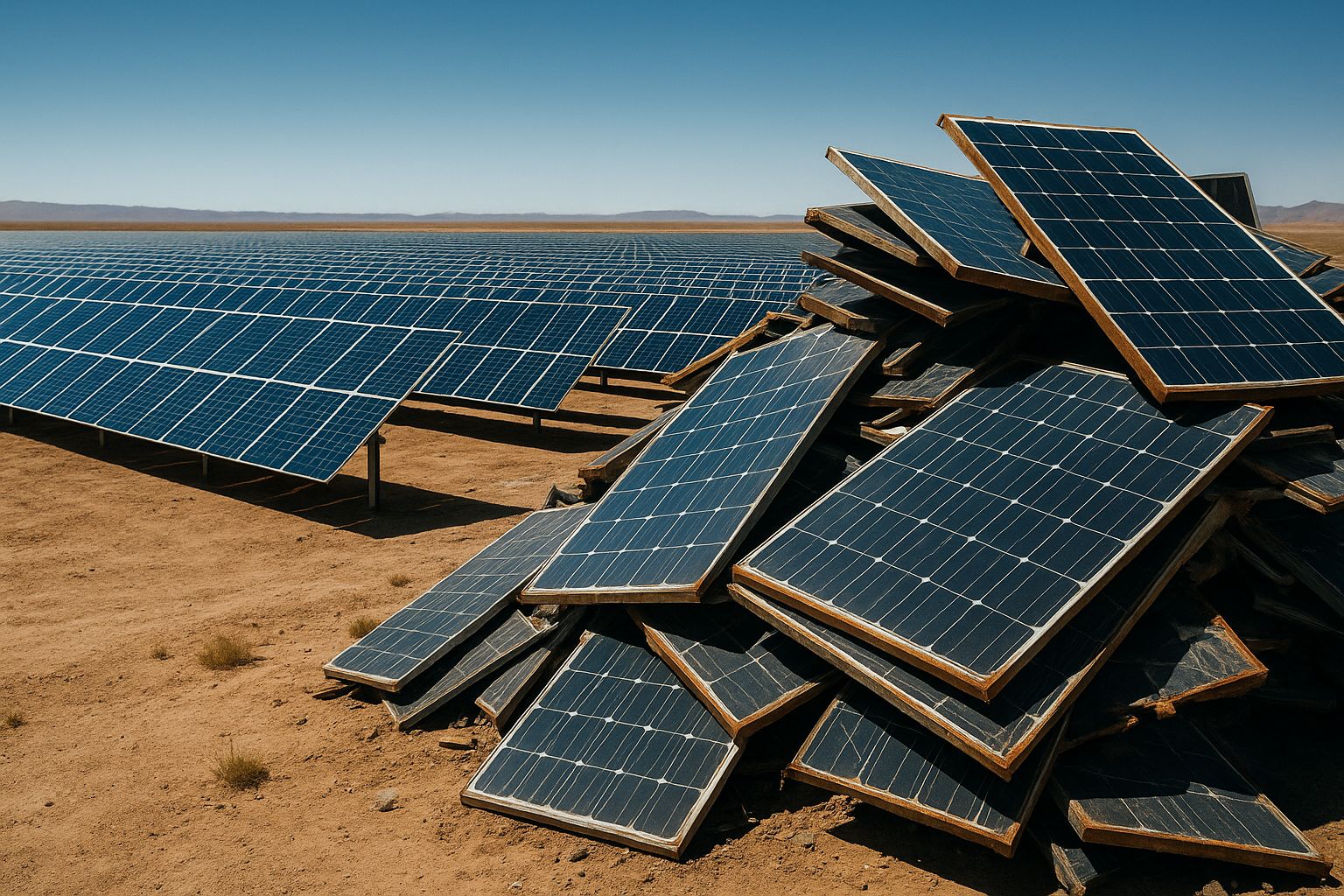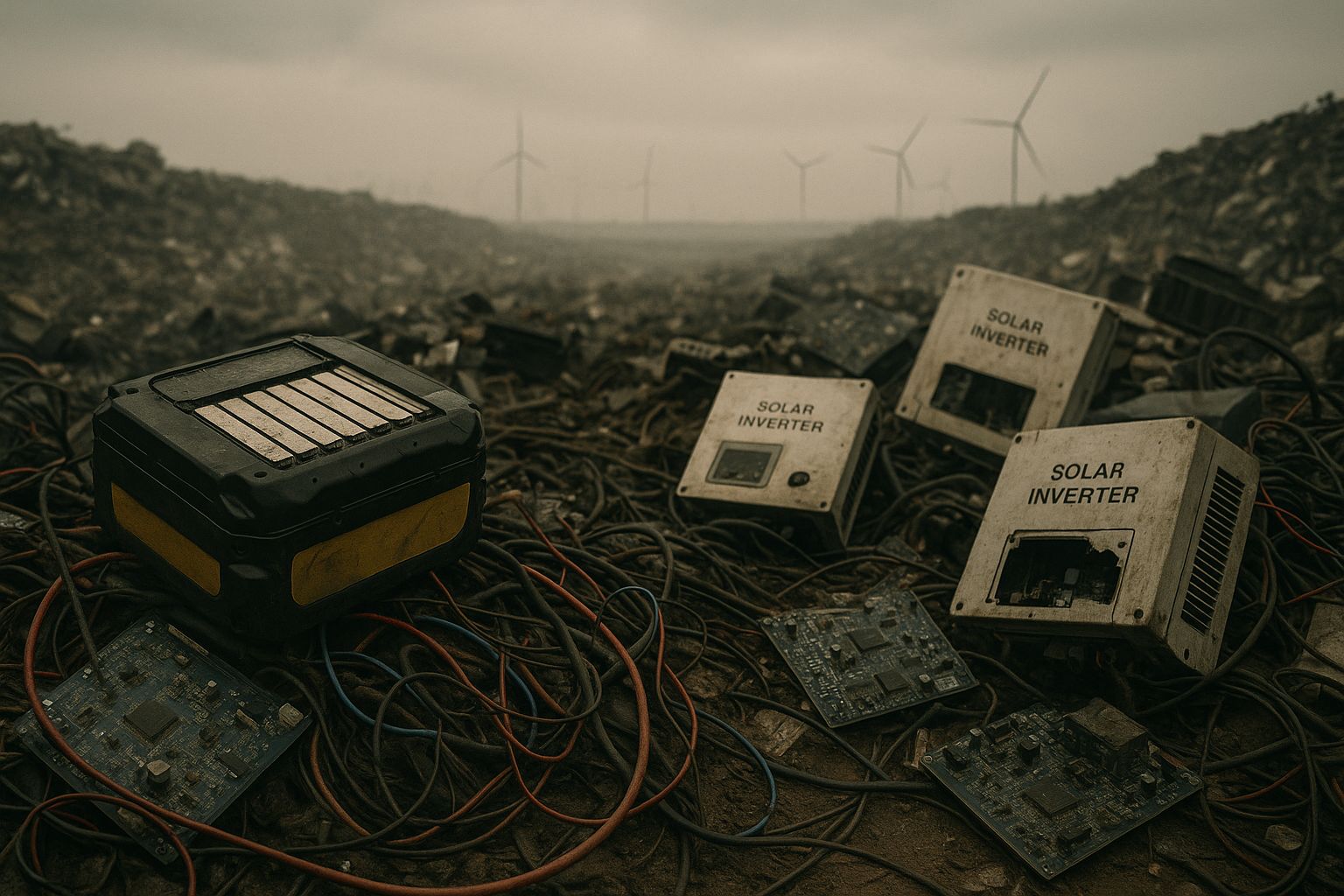- Green Glow
- Posts
- 🌱 Can Renewable Energy Stay Sustainable Without a Recycling Revolution? 🌍♻️
🌱 Can Renewable Energy Stay Sustainable Without a Recycling Revolution? 🌍♻️
Can renewable energy stay sustainable without a recycling revolution? Discover how the growing waste from solar panels, wind turbines, and EV batteries threatens the green transition — and why recycling innovation is crucial for a truly circular future.
Renewable energy has long been seen as humanity’s best hope to curb climate change. Solar panels, wind turbines, and electric vehicles symbolize progress toward a cleaner, greener planet. Yet beneath the surface of this green revolution lies a growing problem — what happens when renewable technologies reach the end of their life cycle?
As millions of solar panels, wind blades, and EV batteries age out, they’re creating a new environmental challenge: green waste. Without effective recycling systems, renewable energy could risk undermining its very purpose — sustainability.
Table of Contents

The Coming Wave of Renewable Waste
Globally, renewable energy installations are growing at record speed — but so is the volume of decommissioned equipment.
Wind turbines: By the end of this decade, Europe alone could dismantle around 14,000 turbines, producing tens of thousands of tonnes of blade waste.
Solar panels: Many first-generation panels are nearing their 25-year lifespan. Without recycling, millions could end up in landfills by 2030.
EV batteries: The push for electric mobility means a surge in lithium-ion batteries that will soon need replacement, bringing a massive demand for safe disposal and material recovery.
The irony is stark — clean energy infrastructure is becoming a new form of waste pollution unless we act quickly to close the loop.
Why Recycling Renewable Equipment Is So Difficult
While 85–90% of a wind turbine’s materials (like steel and copper) are recyclable, the composite blades made from fiberglass and resins are notoriously hard to process.
Similarly, solar panels contain valuable materials — silicon, copper, aluminum, and silver — but extracting them is energy-intensive and not yet profitable at scale.
EV batteries add another layer of complexity, as they contain toxic chemicals and rare minerals that require specialized facilities to handle safely.
The challenge is not a lack of technology — it’s a lack of economic incentive, infrastructure, and regulation. Recycling is expensive, and in most cases, manufacturing new materials is cheaper.

The Emerging Solutions: Innovation at Work
Across the world, innovators are racing to make renewable recycling viable.
In Scotland, retired wind turbine blades from the Hagshaw Hill wind farm are being repurposed into hybrid materials for concrete and construction.
In Spain, Iberdrola aims to recycle 10,000 tonnes of blades annually, recovering glass fibers and resins for aerospace and industrial use.
In Australia, recycling companies are scaling up solar panel recovery to extract aluminum, silicon, and copper for reuse.
Meanwhile, EV battery recycling is becoming a major business, as firms develop chemical extraction processes to reclaim lithium, cobalt, and nickel — reducing the need for mining.
These early efforts are paving the way for a circular renewable economy, but global capacity still falls far short of what’s needed.
The Policy Gap: Why Regulation Matters
Governments hold the key to accelerating this transformation. While the European Union has begun enforcing extended producer responsibility (EPR) for electronic and renewable waste, most countries lack binding recycling standards for solar, wind, and batteries.
Without clear rules or financial incentives, old equipment is often abandoned, exported, or dumped. Policies that reward recycling and penalize landfill disposal could bridge this gap — encouraging companies to design renewable systems with recyclability in mind.
The Future: True Sustainability Demands Circularity
If the renewable sector is to live up to its promise, it must embrace a full-circle mindset. Sustainability doesn’t stop at clean generation — it extends to responsible manufacturing, maintenance, and end-of-life recovery.
A recycling revolution isn’t just an environmental necessity — it’s an economic and moral one. By investing in circular infrastructure today, we can ensure that tomorrow’s energy is not just renewable, but truly sustainable.

Conclusion
The world cannot call renewable energy “clean” if it leaves behind mountains of discarded panels, blades, and batteries. The race to decarbonize must go hand-in-hand with the race to recycle.
Without a recycling revolution, the renewable dream risks becoming another environmental burden.
But with innovation, regulation, and global commitment, we can turn today’s waste challenge into tomorrow’s green opportunity.
FAQs
Why is recycling renewable energy equipment important?
Recycling renewable energy equipment prevents solar panels, wind blades, and EV batteries from ending up in landfills. It also helps recover valuable materials like silicon, copper, and lithium — reducing the need for new mining and making the entire green energy process more sustainable.
What makes wind turbine blades so hard to recycle?
Wind turbine blades are made from fiberglass and resin composites, which are extremely durable but difficult to break down. Traditional recycling methods cannot easily separate these materials, making the process expensive and technically complex.
Are solar panels recyclable?
Yes, solar panels are recyclable — around 90–95% of their materials can be recovered. However, large-scale recycling systems are still developing, and current processes are not always cost-effective without regulatory support.
How are EV batteries recycled?
Recycling EV batteries involves breaking them down and extracting materials like lithium, cobalt, nickel, and copper using mechanical shredding and chemical separation. These recovered materials are then reused in new batteries or other industrial applications.
What can governments do to improve renewable recycling?
Governments can implement Extended Producer Responsibility (EPR) policies, offer financial incentives for recycling, and set mandatory recycling targets for renewable energy components. This ensures producers are responsible for the entire product life cycle, including disposal and recovery.
You May Also Like
External Links
Why the mighty Himalayas are getting harder and harder to see
Trump administration to stop US research on space pollution, in boon to Elon Musk
Paris said au revoir to cars. Air pollution maps reveal a dramatic change.
Air pollution still plagues nearly half of Americans. That does a number on our health
Follow Us:
X: https://www.x.com/greenglownews
Youtube: https://www.youtube.com/@greenglownews
Instagram: https://www.instagram.com/greenglownews
Sponsored Links